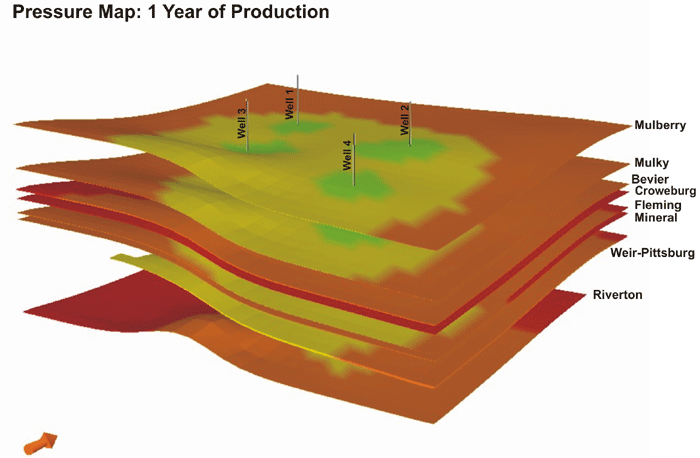Modeling
The use of a reservoir simulator designed to accommodate the complexities of a CBNG reservoir is a good means to obtain a reasonably accurate estimation of the effects of an ECBNG project. The information derived from the CBNG exploration model mentioned earlier provides the basic inputs for creating a reservoir model from which simulations are run.
The simulation area covers roughly a one-square-mile region within Wilson County that has producing CBNG wells, from which production data could be obtained. The model consists of a 26-by-26 grid of cells, each cell measuring 220 by 220 feet, and 15 layers of varying thickness. Layer thickness was derived from isopachs of 8 coals targeted for production, and 7 layers representing the thickness between these coals. These layers were hung from the structure of the uppermost coal (1), The volume created provided the base framework for the remaining reservoir properties to be applied. A complete list of the model input variables is provided below.
Setup and input of the model parameters is the first step towards the goal of simulating an ECBNG project. Before running a simulation of CO2 injection, a history match was done to match the production of the wells in the area. This was accomplished by slightly adjusting the variables, while keeping them within a geologically acceptable range. After a history match was completed, the geologic constraints were kept constant for the remainder of the simulation work. The history-matching and ECBNG portion of the study went through numerous iterations, testing the effects of injection rates and timing, to attempt to distinguish the most positive method of CO2 sequestration.

http://www.kgs.ku.edu/PRS/publication/2006/2006-13/p3-03.html
Last Modified May 2006